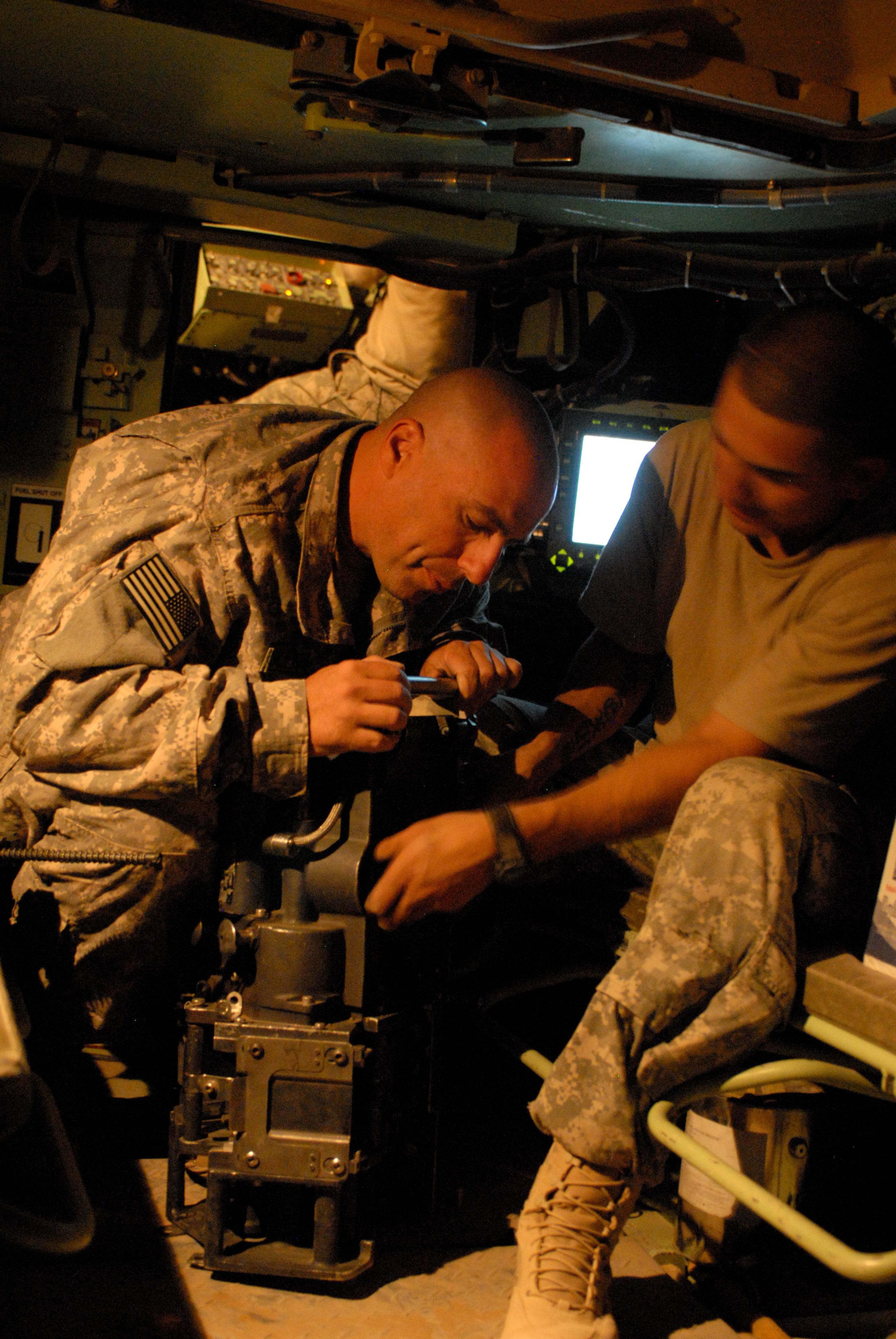CAMP BUEHRING, Kuwait - The 3rd Advise and Assist Brigade, 4th Infantry Division deployed to southern Iraq, is revisiting its old stomping grounds: the gunnery range near Camp Buehring, Kuwait.
The training enables the brigade to maintain its combat capability on two of their main weapons systems while continuing the advise and assist mission in Iraq, a role that does not allow the brigade's Soldiers to work or train with their large weapons.
During the gunnery rotation, which began in September and will continue until December, Soldiers from all six battalions will cycle through the week-long iterations, which alternate between M-2 Bradley infantry fighting vehicle and M-1 Abrams tank gunnery. Each gunnery rotation begins with re-familiarization, followed by the two-day gunnery.
"Our main objective was to first get the new crews familiarized with the Bradley gun system," said Sgt. 1st Class James Glenn, the gunnery range noncommissioned officer-in-charge from Redding, Calif., assigned to Headquarters and Headquarters Company, 3rd Special Troops Battalion, 3rd AAB, 4th Inf. Div.
Each three-man Bradley crew or four-man tank crew tests its skills in a series of offensive and defensive engagement scenarios a minimum of three times without ammunition before progressing to the live-fire exercises.
The range cadre encourages Soldiers to conduct the training meticulously and efficiently to gain as much knowledge as possible.
"Some Soldiers have had the opportunity to be part of a mechanized unit, so they've been around the Bradley for a good part of their career, but we also have some Soldiers who are coming from units like the 82nd Airborne or the 101st who have always been on the ground and have never been able to be a part of the Bradley system," Glenn said.
In addition to Soldiers transferring from non-mechanized units, there were some Soldiers that hadn't received any Bradley or tank training since they left advanced individual training.
"This is my first time driving a Bradley since getting to the unit," said Pfc. John Biven, a driver and scout with Troop A, 4th Squadron, 10th Cavalry Regiment, 3rd AAB, 4th Inf. Div. from Kansas City, Mo. "I learned a lot about driving a Bradley that I wasn't taught in AIT. It was good training."
For many of the more experienced Soldiers, the training provides an important refresher.
"With the missions that we had going on for the past seven or so years, we have guys that don't get to spend that much time on the Bradley," Glenn said. "So those Soldiers are just shaking off the rust."
Even some of the experienced NCOs learned new skills.
"This was more of a refresher for me, but I also got a chance to work with the new computer systems in the Bradleys," said Staff Sgt. Thomas Leyva, a Bradley commander and scout with Troop A, 4th Sqdn., 10th Cav. Regt. from Piscataway, N.J. "The new system is more complex. For instance, while my gunner is engaging a target on his screen, I can be looking at a different target on my screen."
To date, the rotations have gone smoothly due to the range team's emphasis on safety.
"A big thing for us out here is weapons orientation," Glenn said, meaning weapons were always pointed in the proper direction. "Also, we make sure everyone is wearing the proper head gear, and when on top of the vehicles, we make sure that our Soldiers are using three points of contact."
During each iteration, the range team ensures every training task can be completed to standard within the allotted time. This is no small feat in a foreign training area with a mixed group of Soldiers from all six battalions. Still, the master gunners who run the range have cracked the code.
"We've kind of fell into a good rhythm with running the range," Glenn said. "Every person on the range detail has specific things that are their responsibility. That way, we get our ammunition drawn by a certain time, we get our vehicles fueled by a certain time, we have chow at a certain time, and we have everything to a set schedule."
Related Links:
1st Infantry Division and US Division-South web site




Social Sharing